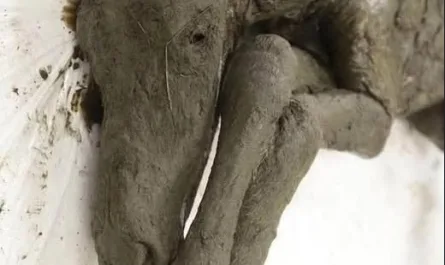The Khorsabad Lamassu: A Monument of Assyrian Grandeur
In a remarkable find, an Iraqi-French archaeological team unearthed an 18-ton limestone sculpture of a lamassu in northern Iraq, dating to the reign of Assyrian king Sargon II (721–705 BCE). This colossal statue, discovered at the ancient city of Dur-Sharrukin (modern-day Khorsabad), embodies the grandeur and symbolism of one of history’s most powerful empires. Despite damage from looting in the 1990s, the lamassu’s well-preserved body now resides in the Baghdad Museum, offering a tangible link to Assyria’s past.
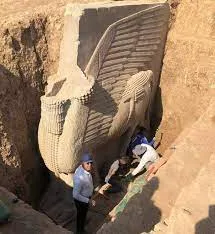
The Lamassu: A Symbol of Power
The lamassu, a mythical creature with the head of a human, the body of a bull, and the wings of an eagle, was a potent symbol in Assyrian culture. Representing intelligence, strength, and divine protection, these sculptures were placed at city gates and palace entrances to ward off evil and awe visitors. This particular lamassu, carved from a single block of limestone, once stood guard at Dur-Sharrukin, Sargon II’s capital, showcasing the empire’s artistic and political might.
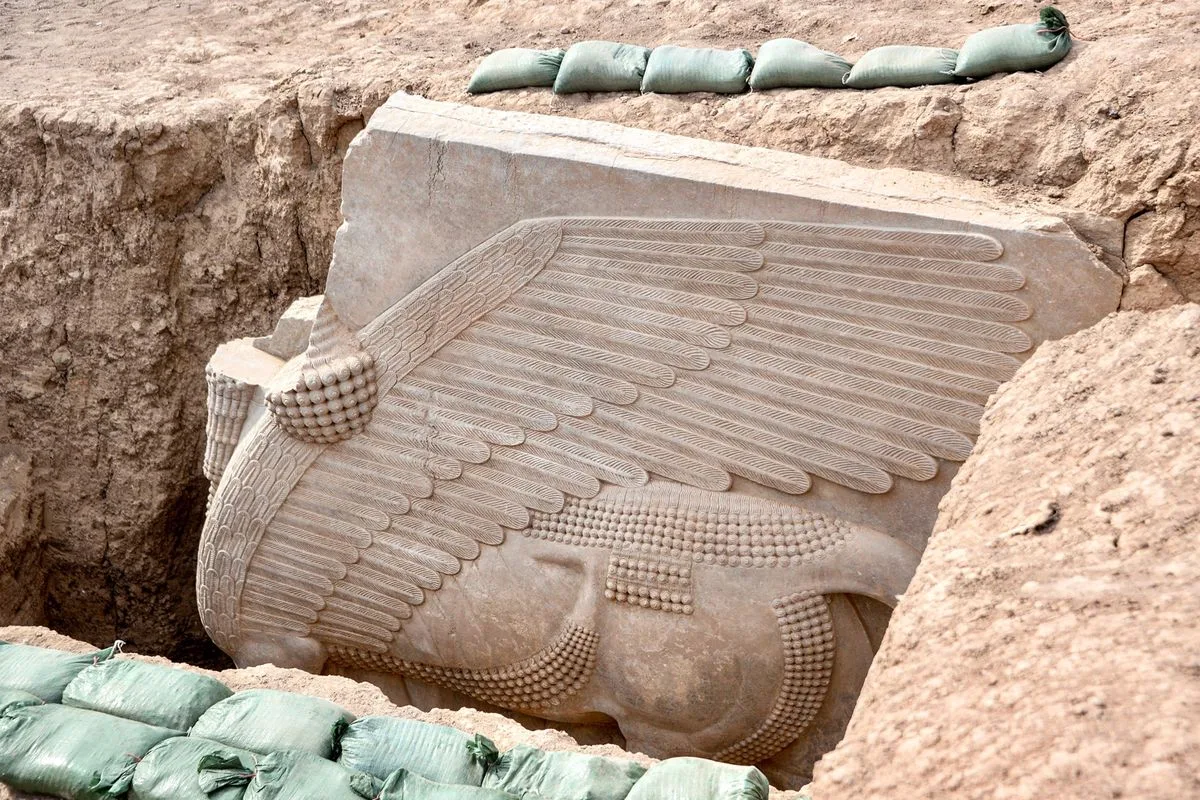
Discovery and Condition
The excavation, conducted by a joint Iraqi-French team, revealed the lamassu in excellent condition, though its head had been separated, likely due to looting in the 1990s amid regional instability. The head’s whereabouts remain unknown, but the body’s intricate details—muscular limbs, folded wings, and elaborate carvings—remain largely intact. Weighing 18 tons, the statue’s sheer scale reflects the engineering prowess of the Assyrians, who transported and erected such monuments without modern machinery.
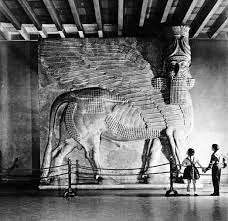
Historical and Cultural Significance
Crafted during Sargon II’s reign, the lamassu hails from a period when Assyria dominated the Near East. Dur-Sharrukin, built as a new capital, was a testament to Sargon’s ambition, though it was abandoned soon after his death. The lamassu’s placement at the city’s entrance underscores its role as both protector and propaganda, projecting royal power to subjects and visitors alike. Its discovery adds to our understanding of Assyrian art, religion, and urban planning.

A New Home in Baghdad
Now housed in the Baghdad Museum, the lamassu serves as a centerpiece of Iraq’s cultural heritage. Its preservation, despite the loss of its head, highlights the resilience of ancient craftsmanship and the importance of ongoing archaeological efforts. The statue stands as a reminder of the challenges facing cultural preservation in conflict zones, where looting and destruction threaten irreplaceable artifacts.
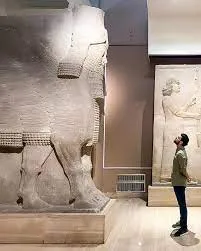
A Legacy Preserved
The Khorsabad lamassu is more than a sculpture; it is a window into the Assyrian world, where myth, power, and artistry converged. Its discovery reaffirms the value of collaborative archaeology in uncovering and protecting the past. As it takes its place in the Baghdad Museum, this monumental guardian continues to inspire awe, just as it did over 2,700 years ago.


